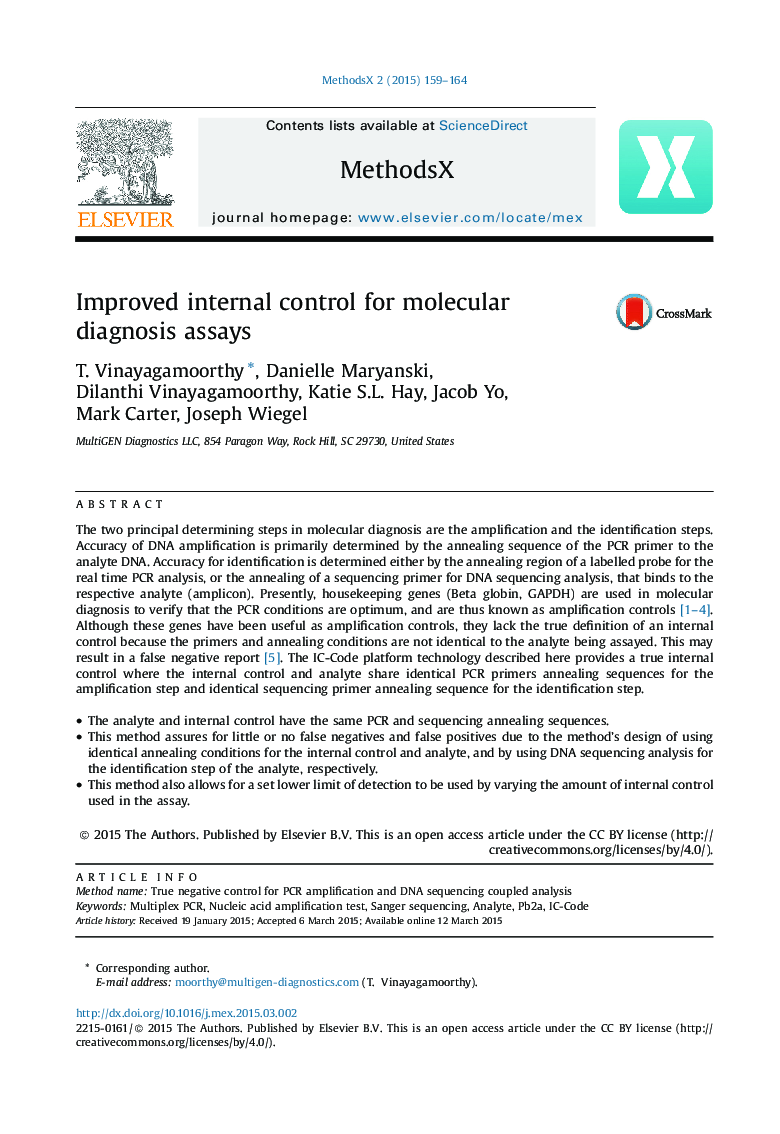| Article ID | Journal | Published Year | Pages | File Type |
|---|---|---|---|---|
| 2058743 | MethodsX | 2015 | 6 Pages |
The two principal determining steps in molecular diagnosis are the amplification and the identification steps. Accuracy of DNA amplification is primarily determined by the annealing sequence of the PCR primer to the analyte DNA. Accuracy for identification is determined either by the annealing region of a labelled probe for the real time PCR analysis, or the annealing of a sequencing primer for DNA sequencing analysis, that binds to the respective analyte (amplicon). Presently, housekeeping genes (Beta globin, GAPDH) are used in molecular diagnosis to verify that the PCR conditions are optimum, and are thus known as amplification controls [1], [2], [3] and [4]. Although these genes have been useful as amplification controls, they lack the true definition of an internal control because the primers and annealing conditions are not identical to the analyte being assayed. This may result in a false negative report [5]. The IC-Code platform technology described here provides a true internal control where the internal control and analyte share identical PCR primers annealing sequences for the amplification step and identical sequencing primer annealing sequence for the identification step.•The analyte and internal control have the same PCR and sequencing annealing sequences.•This method assures for little or no false negatives and false positives due to the method’s design of using identical annealing conditions for the internal control and analyte, and by using DNA sequencing analysis for the identification step of the analyte, respectively.•This method also allows for a set lower limit of detection to be used by varying the amount of internal control used in the assay.
